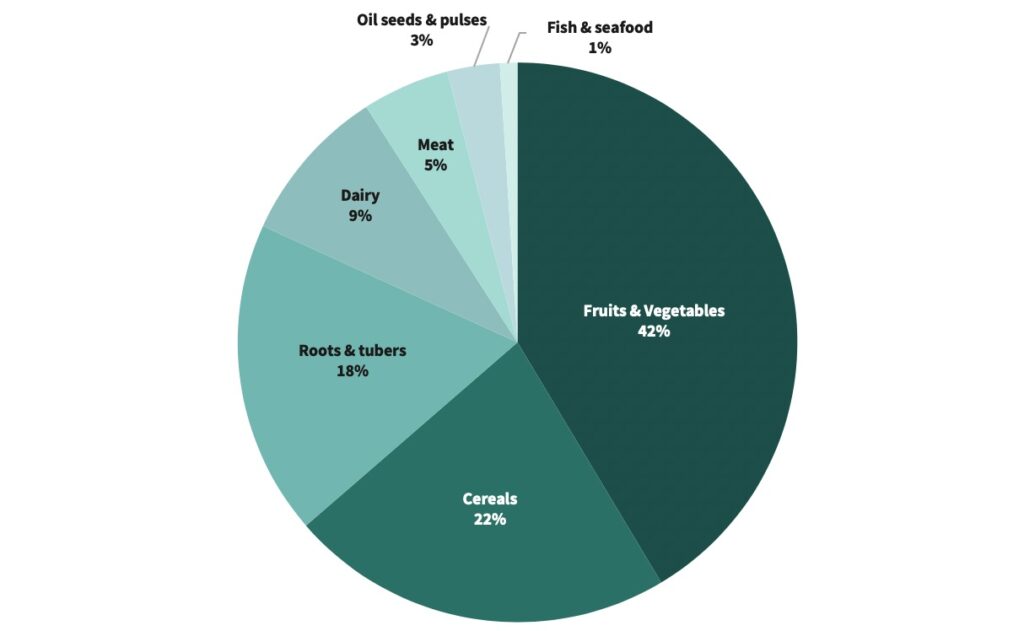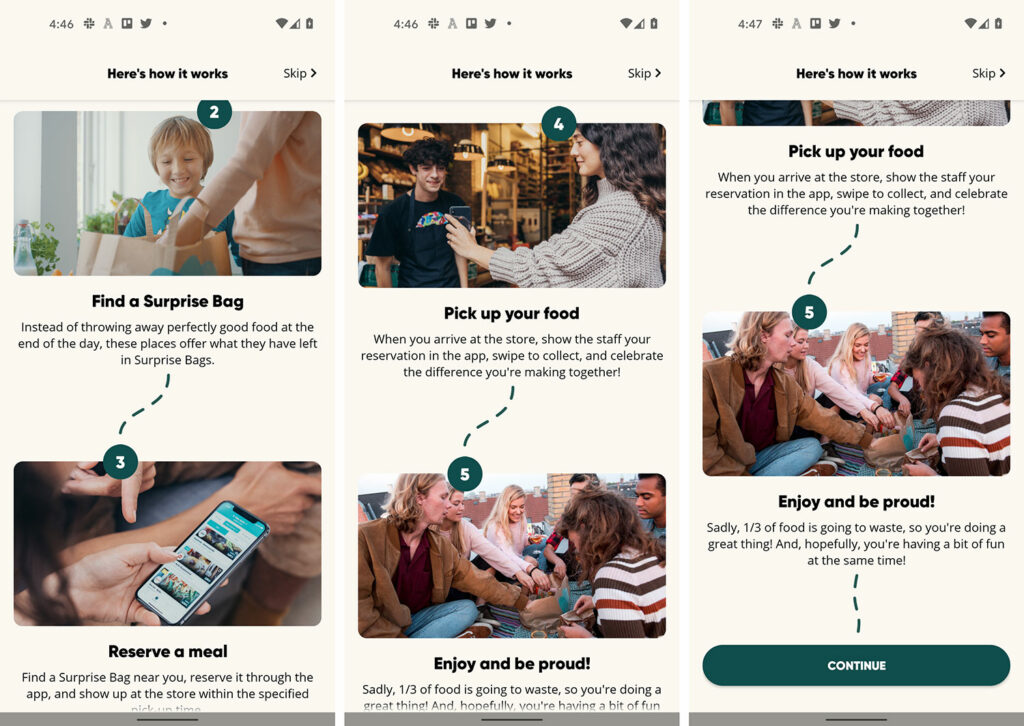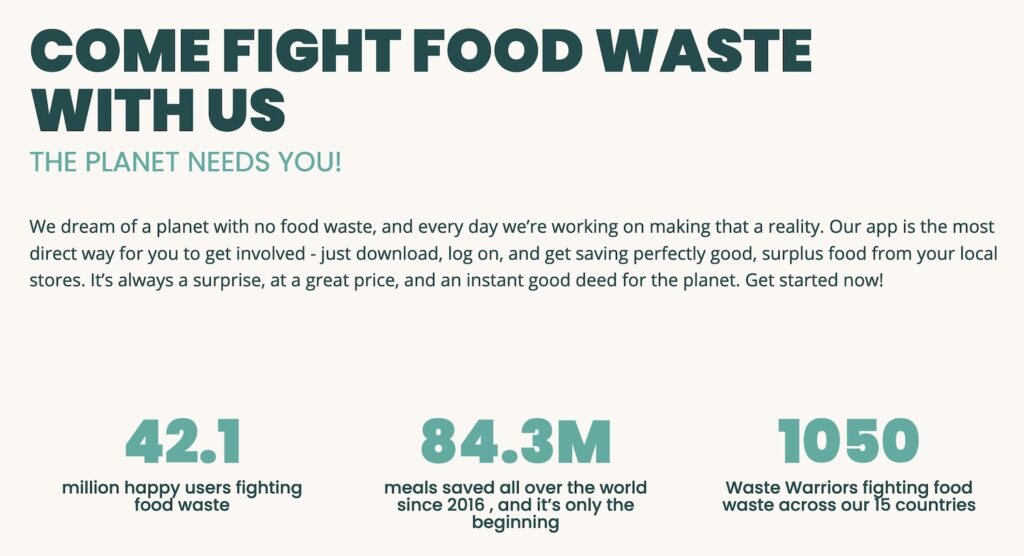Loading...

A new app has entered Canada on a mission to reduce food waste in grocery stores, restaurants and cafés by making it available to consumers at cheaper prices.
Too Good To Go is an organization devoted to fighting climate change by reducing food waste. To do so, one of its four pillars focuses on partnering with local shops and eateries to sell off surplus food to consumers through a mobile app on iOS and Android. The key is to offer foodstuffs vendors would otherwise throw away to make room for new batches for their customers.
This isn’t about pawning off expired or partially-eaten food. Some of the food would be close to expiry, or be prepared items that didn’t sell that day, and wouldn’t be ideal to display again the following day. Making them available at reduced prices might incentivize consumers to buy them and save the environment all at once.

The organization breaks it down by various metrics, trying to quantify what foods are discarded above all others. Since the company started in 2016, it claims to have saved 80 million meals — or 200 million pounds — across 15 countries. Canada is new to the list, starting in Toronto and Vancouver, with expansion into Montreal set to take place next before branching out across other cities.
Sam Kashani, Country Manager for Canada at Too Good To Go, says the country is among the worst offenders for discarded food. More than 50% of all food produced nationwide goes to waste, amounting to 35.5 million tons per year. That’s enough to feed every Canadian for five months, particularly when 11.2 million tons of that stuff is still edible. With an app like this, it’s hoped Canadian businesses and consumers who join up make a dent in that number.

Basically, the premise is like an extension of that discount shelf you see in a grocery store. Foods ready for consumption that day or with upcoming expiry dates often populate those shelves, only in this case, it also includes restaurants and cafés that may have perfectly edible food they can’t legally sell the next business day.
Such is the razor-thin business of food, no matter how you sell it. While it’s all but impossible for stores and eateries to produce exactly the amount commensurate with foot traffic and online orders, Too Good To Go focuses on what we can best look at as an overspread. Better it go into hungry mouths than a garbage bin is the company’s mantra.

The app isn’t an a la carte experience beyond selecting the place you want to eat from. It uses “Surprise Bags,” which are prefilled bags or bundles of foods you purchase at one flat rate. You don’t know what’s in them unless there’s some disclaimer telling you, like baked goods, assorted produce, prepared meals, bread or prepared food.
You can reserve the items for yourself on the app and pick them up within the set time window. That window might also run 30-60 minutes after operating hours. It’s not totally unlike picking up a meal through a food delivery app, except the app reveals a unique code the store or eatery can confirm to complete the deal.
The type of food can vary pretty widely depending on who is involved. Having only launched in July 2021, it’s still early, but the app has baked goods, produce and beverages thus far.

It does beg the question of why these places don’t just donate the surplus to food banks or homeless shelters. Not all jurisdictions allow restaurants to give food away at the end of the day to shelters or the needy. The app gets around that by brokering a price instead; one low enough that it may help those who couldn’t afford their products at full price. Often, the bags are available for a fraction of the retail price, making it more affordable for everyone.
Kashani says Too Good To Go does work with food banks and charities to tackle hunger, though adds it is prioritizing dealing with the issue long-term by bridging together the places and people that can reduce the waste locally. The app doesn’t offer delivery, so all bags have to come from a pickup area in the store or restaurant.
The win-win is that the vendors recoup something monetarily, while the customer stretches their dollar further from a quantitative standpoint. Too Good To Go takes a small cut on every sale, without any increases, no matter what’s actually in the bag. It gives restaurants their cut at the end of every month.
The “surprise” part of each bag may be lacking important context. While you know the general contents, you don’t know what or how much. You can’t rearrange or replace anything in the bag, and there’s no telling if there’s something allergic in the mix unless you call the vendor directly to ask.
The company also can’t really quantify how much customers discard the food they’re buying through the app. Just because someone buys a bag through Too Good To Go, doesn’t mean they will consume everything in it. That’s also hard to track, so it’s unclear how much of the food saved actually ends up in people’s stomachs. For now, though, you can try it out and see for yourself.
To ‘GetConnected’ to our newsletter, fill out the details and hit the ‘SUBSCRIBE’ button. We do require you to confirm your email.